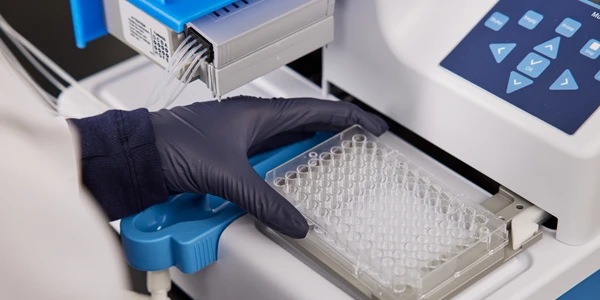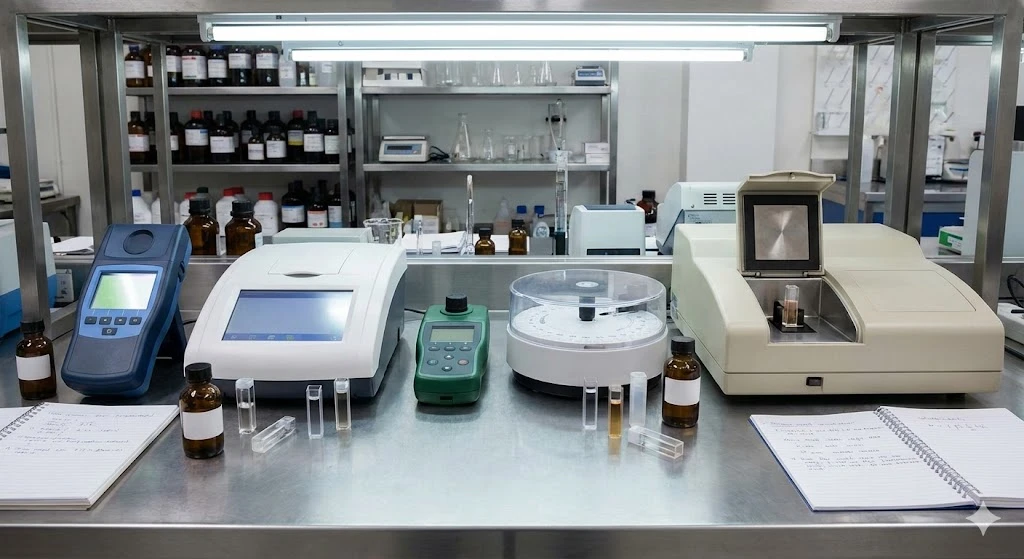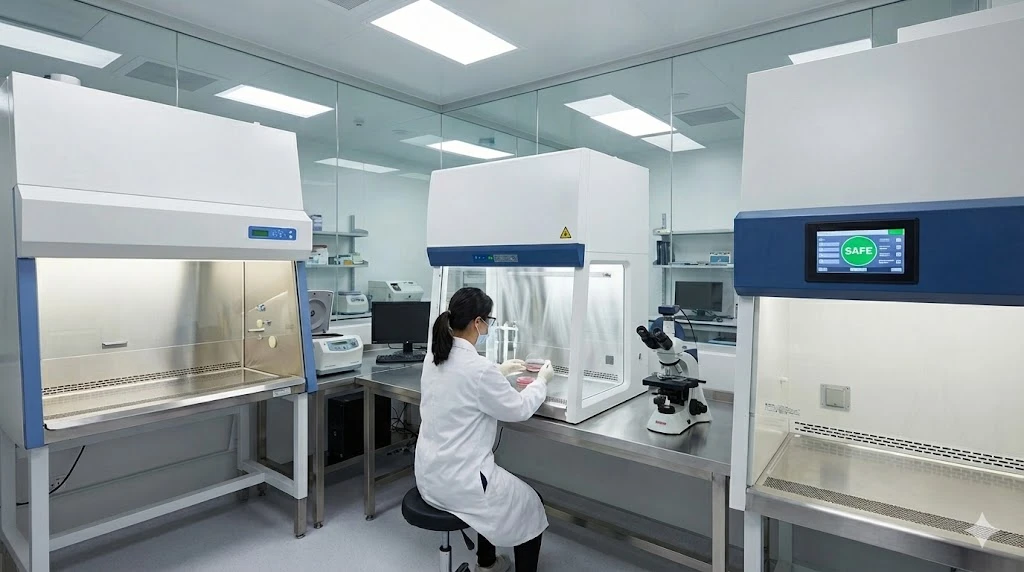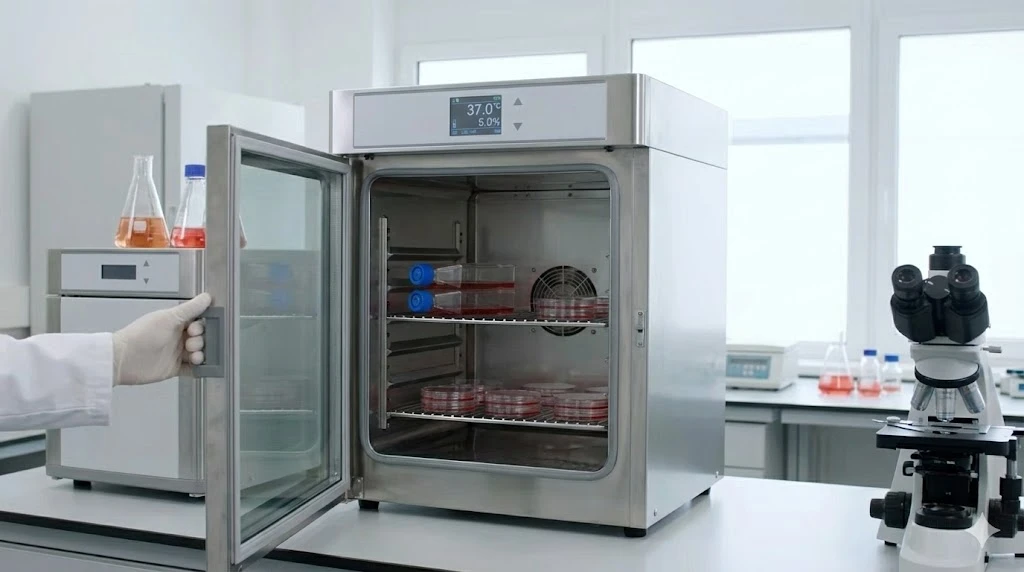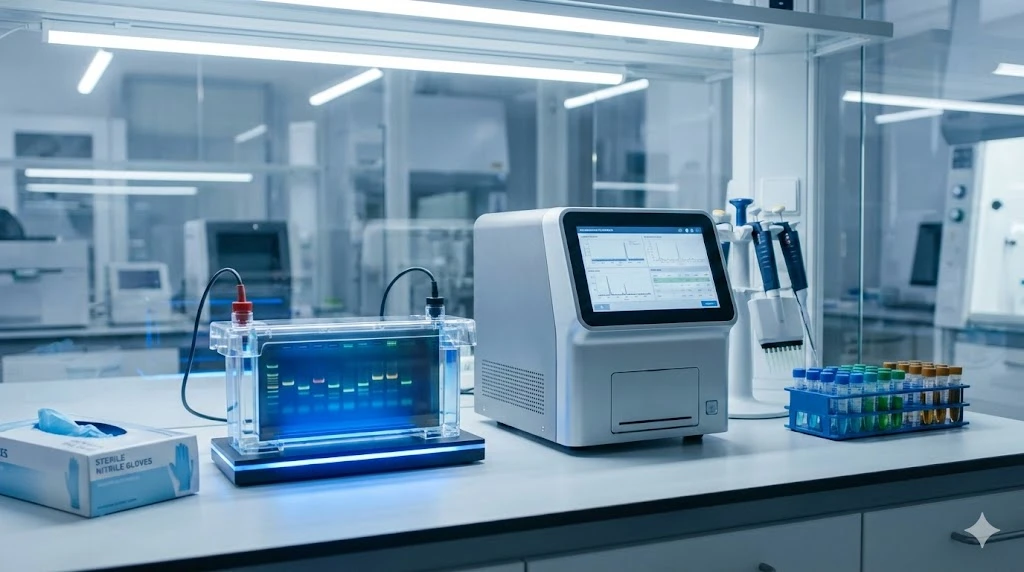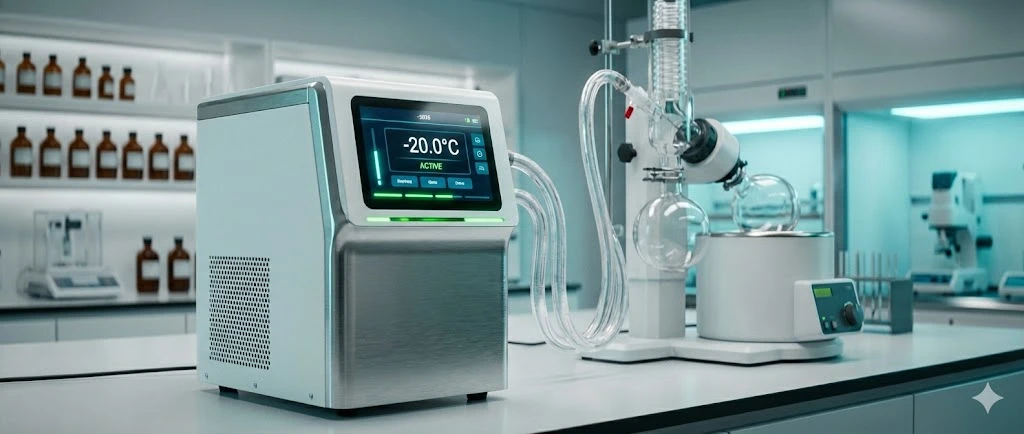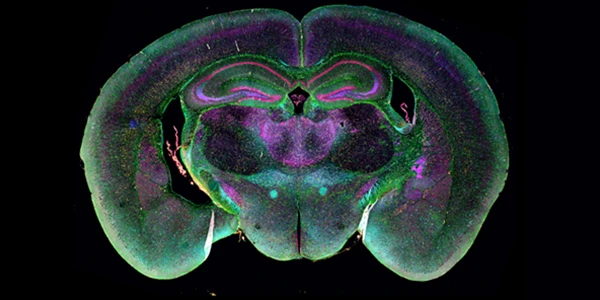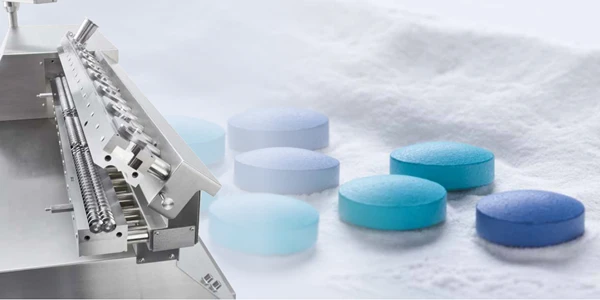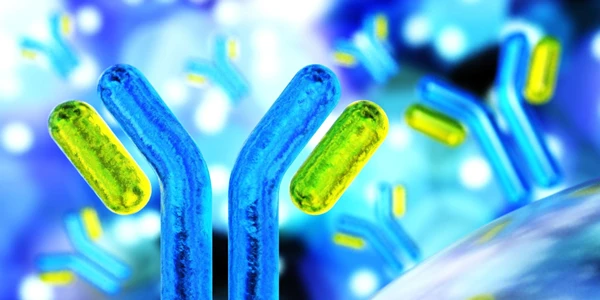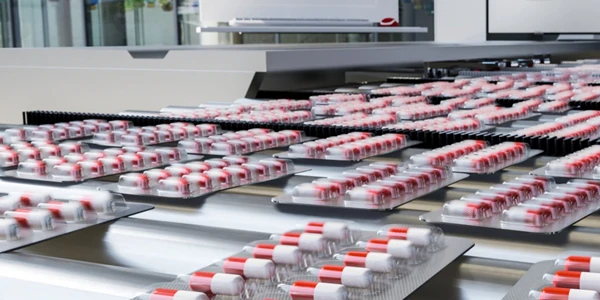Calibration and Quality Control Procedures for Gamma Counting
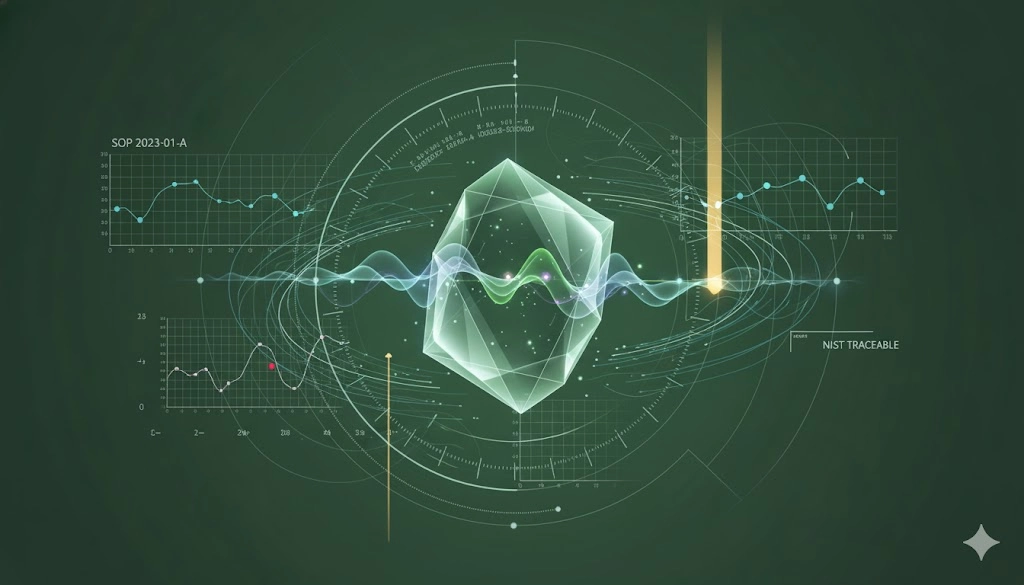
GEMINI (2025)
The integrity of radiochemical assays hinges on the consistent performance of the analytical instrumentation utilized. For laboratory professionals performing radioimmunoassays, nuclear medicine diagnostics, or environmental monitoring, the reliability of gamma counting systems is paramount. Implementing rigorous calibration and robust quality control programs is not just a best practice; it is a fundamental requirement for generating scientifically valid and legally defensible data. This article outlines the necessary protocols to maintain peak instrument performance and ensure the long-term accuracy of these highly specialized detectors.
Optimizing Gamma Counting Performance: Core Principles and Instrumentation
Gamma counting refers to the measurement of gamma radiation, typically emitted during the decay of radioisotopes. A gamma counter, usually a well-type crystal scintillation detector, converts the energy of incident gamma rays into light pulses, which are then amplified and measured electronically. Understanding the functional principles of this instrumentation is critical before initiating any calibration or quality control procedures. The primary components influencing the measurement include the scintillation crystal (often NaI(Tl)), the photomultiplier tube (PMT), the high-voltage (HV) supply, and the pulse-height analyzer (PHA).
The core principle involves the scintillation crystal absorbing gamma ray energy, creating light photons proportional to that energy. The PMT converts these photons into an electrical signal, which the HV supply amplifies. The PHA then sorts the resulting electrical pulses based on their height, which directly corresponds to the gamma ray energy. This process highlights why energy-based calibration is the single most critical step. Any drift in the HV setting or PMT gain directly shifts the energy spectrum, leading to inaccurate results. Regular maintenance and environmental controls—such as stable temperature and protection from vibration—are necessary precursors to any effective quality control regime for the gamma counting instrument.
Essential Calibration Procedures: Maximizing Gamma Counting Accuracy and Efficiency
The process of calibration involves establishing the detector's response characteristics using reference standards traceable to national or international metrology institutions. For gamma counting instruments, three primary forms of calibration must be routinely performed: energy, efficiency, and background.
Energy Calibration
Energy calibration ensures that the measured pulse height accurately corresponds to the gamma ray energy (keV). This step is crucial for discriminating between isotopes and accurately measuring specific radionuclides in a mixed sample.
Procedure: A certified, single-peak radionuclide standard (e.g., Cesium-137, 662 keV) or a multi-peak standard (e.g., Europium-152) is counted. The high voltage (HV) is adjusted until the photopeak of the standard is accurately centered within the designated channel or region of interest (ROI). Modern gamma counting systems often automate this process, but the laboratory professional must verify the initial settings and the stability of the energy curve.
Acceptance Criterion: The peak center must be stable within +/- 1% of the expected channel location. A deviation beyond this range indicates a need for recalibration or troubleshooting of the PMT/HV system.
Efficiency Calibration (Counting Yield)
Efficiency calibration determines the fraction of emitted gamma rays that are successfully detected and counted by the system. This value is essential for converting measured counts per minute (CPM) into actual disintegrations per minute (DPM) or activity units.
Procedure: Certified reference standards with known activity in the same matrix and geometry as the samples are counted. The efficiency is calculated by dividing the observed count rate by the known disintegration rate.
Importance of Geometry: Efficiency is highly sensitive to the sample volume, container type, and placement within the well. Therefore, efficiency calibration must be performed for every unique sample geometry utilized by the gamma counting laboratory.
Background Calibration
Background counts, caused by natural environmental radiation and inherent instrument noise, must be periodically measured and subtracted from sample measurements. This is critical for accurate gamma counting.
Procedure: A blank sample (no radioactivity) identical in geometry and matrix to the analyzed samples is counted for an extended period.
Quality Control Link: Background levels should be logged and monitored as part of the routine quality control process. A significant, sudden increase in background suggests environmental contamination or a component failure in the gamma counting instrument.
Sustaining Reliability: Implementing Daily and Long-Term Quality Control for Gamma Counting
A robust quality control program is the mechanism by which the calibration status of the gamma counting system is continuously verified between full calibrations. This ensures data reliability on a run-to-run and day-to-day basis.
Daily and Weekly Quality Control Checks
Daily checks focus on verifying the operational stability of the instrument, while weekly checks typically cover a broader range of performance metrics.
QC Check | Frequency | Purpose | Acceptance Criteria |
|---|---|---|---|
Constancy Check | Daily (or per run) | Verify overall counting stability and detector sensitivity using a long-lived standard. | Counts must be within a short range of the established mean. |
High Voltage (HV) Check | Weekly | Confirm stability of the HV power supply which affects pulse height. | Peak channel must be within +/-1%of the target. |
Background Check | Daily | Monitor environmental and inherent detector noise in the gamma counting system. | Counts must be below a maximum predetermined threshold. |
Resolution Check | Monthly | Monitor spectral peak width (FWHM), an indicator of crystal/PMT health. | Must not degrade by more than |
Establishing Control Charts
The quality control data generated from the constancy and background checks must be plotted on Levey-Jennings control charts. These charts provide a visual and statistical method for monitoring the instrument's performance over time. The mean and standard deviation are calculated from a minimum of 20 initial readings when the instrument is known to be in perfect calibration.
Warning Limits: Set at
+/- 3 from the mean. A single data point falling outside this limit warrants investigation and increased scrutiny of the gamma counting performance.Action Limits: Set at
a short range from the mean. A single data point falling outside this limit mandates that all analytical work stops, the instrument is removed from service, and a full recalibration and troubleshooting effort is initiated.
Effective quality control ensures that any subtle drift in the gamma counting system—before it impacts the assay results—is immediately identified and corrected. This proactive approach to calibration maintenance is essential for laboratory accreditation.
Regulatory Excellence: Documentation and Audit Preparedness for Gamma Counting Labs
Compliance with regulatory bodies, such as CLIA (Clinical Laboratory Improvement Amendments), the FDA (Food and Drug Administration), and in the U.S., the Nuclear Regulatory Commission (NRC), or equivalent national nuclear regulatory authorities, is mandatory for many gamma counting applications. Comprehensive documentation of all calibration and quality control activities provides an audit trail that demonstrates the laboratory's commitment to data integrity and instrument validity.
Standard Operating Procedures (SOPs)
Every gamma counting laboratory must maintain detailed, validated SOPs for all instrument operations, calibration procedures, and quality control monitoring. These documents must be reviewed and approved regularly. Key SOPs include:
Instrument start-up and shutdown procedures.
Daily, weekly, and monthly quality control checks, including the specific standard and calculation method for gamma counting.
Full instrument calibration procedure (energy and efficiency).
Corrective action plans for out-of-control quality control events, specifying when recalibration is necessary.
Calibration and Maintenance Logs
A dedicated logbook or digital system must track all activities related to instrument performance. This log must contain:
Dates and results of all calibration procedures, including pre- and post-adjustment readings for the gamma counting system.
Records of all instrument maintenance, repairs, and part replacements (e.g., PMT or crystal replacement).
Documentation of all quality control failures, the investigation conducted, and the corrective actions implemented, clearly linking the need for calibration to the failure.
The traceability of the standards used for both calibration and quality control is another critical element of compliance. Certificates of analysis, demonstrating traceability to primary national standards (e.g., NIST in the U.S.) or equivalent international metrology institutions, must be retained and easily accessible during audits. Maintaining immaculate records is the final, essential step in a successful gamma counting program, ensuring that all data generated is reliable and defensible.
Achieving Unquestionable Data Integrity in Gamma Counting
The reliability of specialized analytical data in demanding fields such as nuclear medicine and environmental monitoring depends entirely on the robust implementation of instrument maintenance programs. The foundational process of calibration sets the initial stage for accuracy by correctly mapping energy to pulse height and quantifying detector efficiency for the gamma counting instrument. Following this, the essential daily and long-term quality control checks serve as the primary evidence of ongoing instrument stability. By rigorously adhering to detailed SOPs, meticulously documenting all procedural steps and failures, and ensuring that certified reference materials are used consistently, laboratory professionals establish an environment where the accuracy of every gamma counting measurement is unquestionable. Continued adherence to these protocols ensures that the instrument remains in optimal calibration, preserving the integrity of the data and fulfilling regulatory quality control mandates.
Frequently Asked Questions (FAQ)
What is the difference between calibration and quality control for gamma counting instruments?
Calibration is the process of adjusting the instrument's settings (e.g., high voltage) to ensure measured output accurately reflects the physical input (gamma ray energy), using certified standards. Quality control (QC) is the process of monitoring the instrument's stability and consistent performance after calibration, typically using a long-lived check source to verify that the gamma counting remains accurate.
How often must an energy calibration be performed on a gamma counting system?
A full energy calibration must be performed when the instrument is first installed, after any major component replacement (like the photomultiplier tube or crystal), and whenever routine quality control checks indicate a significant spectral shift, often defined as a peak drift exceeding
Why is geometric configuration crucial for gamma counting efficiency?
Geometric configuration, encompassing the sample volume, container shape, and its position relative to the detector, fundamentally determines the fraction of emitted gamma rays that enter and are registered by the detector crystal. A slight change in geometry can drastically alter counting efficiency, requiring a dedicated efficiency calibration for each specific configuration, which is essential for accurate quantitative gamma counting.
What is the primary consequence of poor quality control in a gamma counting laboratory?
The primary consequence is the generation of potentially inaccurate or indefensible analytical results. Poor quality control leads to undetected instrument drift, which compromises both the precision and the accuracy of the measurements, risking non-compliance with regulatory standards and invalidating patient or environmental assay data, underscoring the necessity of diligent quality control and calibration.
This article was created with the assistance of Generative AI and has undergone editorial review before publishing
